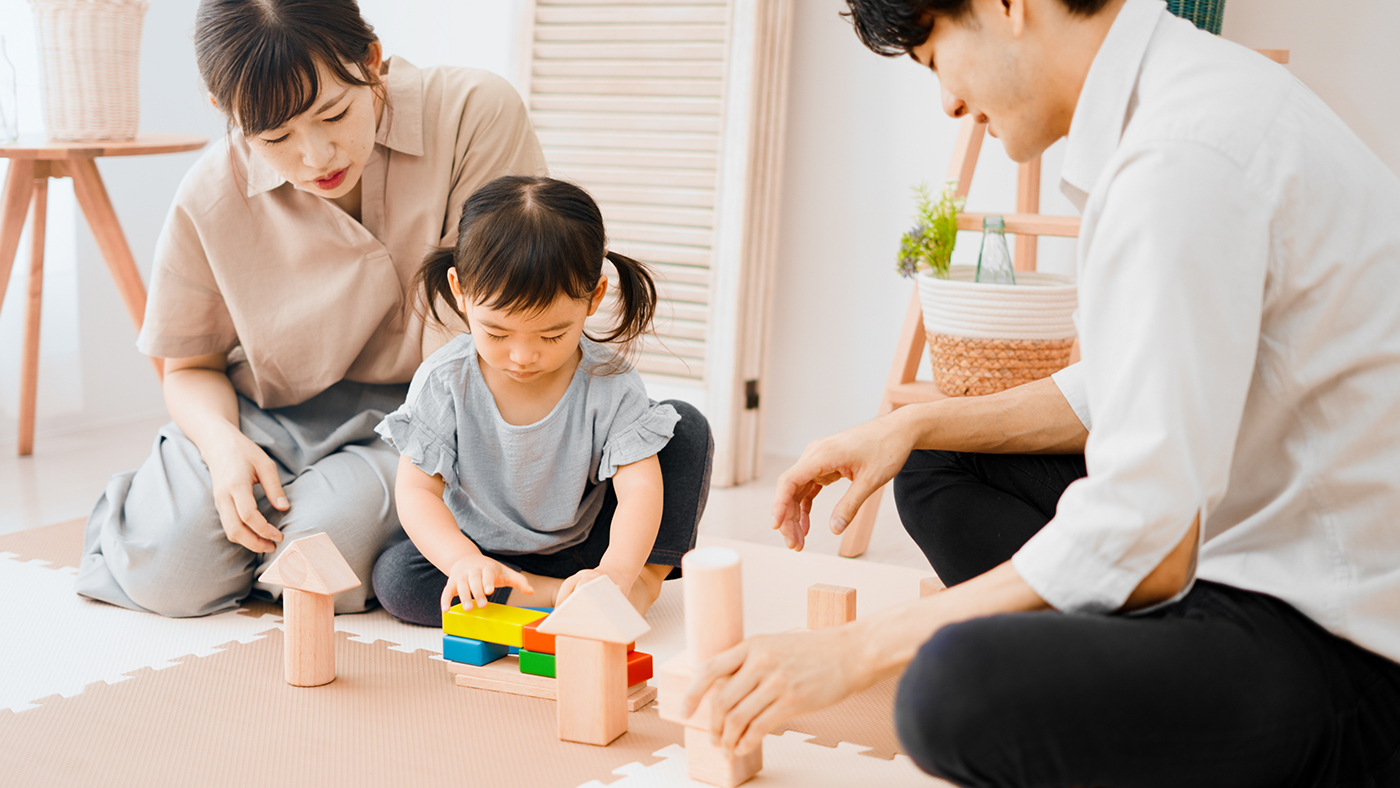Copies a three block bridge

Your child will have been exploring blocks and you may have seen them build towers using a variety of building resources. They may have been connecting some of them together and pulling them apart again. They may have started to take more of an interest in how to further develop the skills they have gained with their fine motor skills, in order to create new structures.
Object prehension
Researchers suggest that quite early on children gain an understanding of how to plan to make an action happen, for example, a baby will understand that if they would like their spoon they need to reach for and grab it. Now that your child is somewhat older, they have extended their knowledge and skills in this area. They are now demonstrating that they understand actions take place in a sequence and they are aware of what some of the sequences could be. To enhance this developing understanding, their movements have become more refined to be able to plan where they would like to place an object and are then able to execute the action. [1]
Hand grasps
When your child reaches for and picks up their blocks, they are now more aware of the positioning of their shoulder, arm elbow and fingers. [2] They now have the capability to adjust their palms, fingers and thumb in order to pick up objects of varying shapes and sizes and when they place a block in a specific space, they are able to stabilise the object in their hand until it is in position. It is their sensory system that gives them information as to how much pressure they need to apply in order to hold the block, or any other object they wish to pick up. [3]
Now, as your child’s understanding of how to create more technical structures is starting to emerge, they are actively seeking to explore new ways to join, build and balance. Each time they observe and copy a three block bridge being made, it helps them to remember the sequence of how to pick up a block, move it and place it into position.
They may require some fine-tuning in terms of their movements, as while they learn the sequence of lifting a block and transferring it to the desired location, they are also learning how to set the block down exactly as they envisage and may need to jiggle the block before it sits as they intend. [1] Because your child is still learning how to organise a series of actions, they may frequently find their arm, wrist, or hand in an awkward or unpleasant position while attempting to achieve their desired outcome. [4]
Visual skills
When your child is watching and copying how you place and move blocks during play, your child is further developing their spatial awareness, visual discrimination, visual memory, position in space, and other areas. Copying specific designs also further supports your child to develop their hand grasp, wrist movement and precision in placing blocks in a specific place.
What next?
You may see more complex designs when your child builds with blocks. Their fine motor skills will support them further with the concept of 3 dimensional creations and the art of balancing blocks to create useable structures. They will be able to transfer the skills used in block play to larger scale structures using a variety of resources.
References:
[1] K. E. Adolph, J. E. Hoch, O. Ossmy (2020). James Gibson’s ecological approach to locomotion and manipulation: Development and changing affordances. In J. Wagman & J. Blau (Eds.). Perception as information detection: Reflections on Gibson’s ecological approach to visual perception. New York: Taylor & Francis, pp. 248-266.
[2] D. Sugden, M Wade (2013). Typical and Atypical Motor Development. Mac Keith Press
[3] S.J. Edwards, D.B Gallen, J.D McCoy-Powlen, M.A. Suarez. (2018) Hand Grasps and Manipulation Skills. Second Edition. Slack Incorporated.
[4] O. Ossmy, B. E. Kaplan, D. Han, M. Xu, C. Bianco, R. Mukamel, K. E. Adolph, (2021). Real-time processes in the development of action planning. Current biology, https://doi.org/10.1016/j.cub.2021.11.018